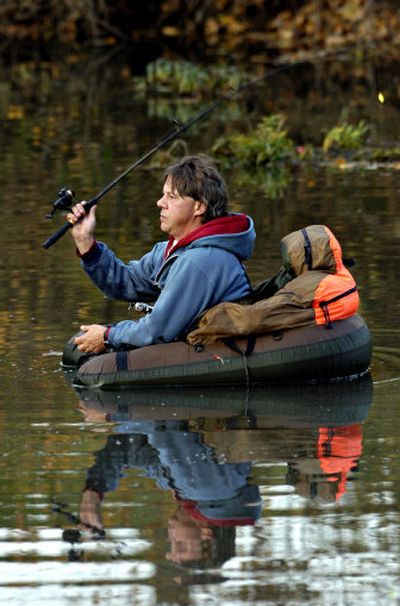Going self-propelled catches on

DALLAS – With gasoline prices hovering around $3 a gallon, fishermen are looking for ways to save money on their towing vehicles and fishing boats. For budget-minded anglers, self-powered craft are more attractive than ever.
They’re also better than ever, according to Rick Pope, president of Dallas-based Springbrook, a fly-fishing company whose products include the popular Temple Fork Outfitter fly rods.
From float tubes to kayaks and pontoon boats, Pope has experience with every genre of self-propelled fishing boats. Like many middle-aged anglers, Pope started with a float tube, also known as a belly boat because the first models were made from a truck inner tube.
The tuber sat on a harness in the tube’s center with feet hanging straight down.
“Float tubes are still the least expensive of the self-powered fishing craft,” Pope said. “They have limited mobility, but at least you’re not stuck on the bank. You can still find doughnut-style float tubes. You can also find U-shaped models that offer more back support and more comfort.”
Good float tubes are available for less than $100. They fit handily in the trunk of any car and can even be deflated to lessen storage space. When the water is cool, tubers wear waders to keep dry. Specially-designed kick fins ($30 to $150), worn on your feet, make it much easier to propel the craft.
Pope has paid his dues in a float tube but prefers the greater mobility and comfort offered by a pontoon boat. The smaller versions are often called kickboats and operate like extra-large float tubes.
The kickboat angler sits higher in the water, but legs are still submerged. The flotation is provided by inflatable pontoons connected by a metal-and-webbing frame. You can still wear kick fins to position the boat, but most pontoon boats are also equipped with oars for greater mobility. Many of these rigs have the flotation capacity necessary to accommodate a marine battery and electric motor.
“Pontoon boats cost $250 to $2,000,” Pope said. “The two-man models are sometimes equipped with a metal frame that allows one angler to stand and cast from the front of the boat while the other guy rows the boat.
“You see a lot of pontoon boats on Western rivers, and I’ve seen them safely navigate whitewater rapids that are big enough to be scary. They’re particularly good for float fishing, but they also work fine on flat water. The only downside is that the pontoons float high enough to act like a sail on a windy day.”
Many fly shops provide vehicle shuttle services for anglers floating rivers.
Self-propelled fishing boats are not nearly as efficient nor comfortable as even a simple fishing boat with a gasoline engine and electric motor. Self-propelled boats represent an inexpensive way to catch fish in a more relaxed fishing style.